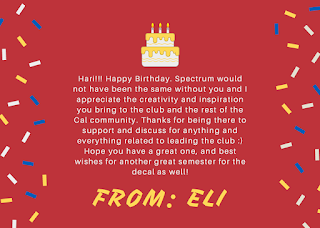A mention in August Company
Atypical
In the context of autism, "atypical" refers to behaviors, traits, or abilities that deviate from those commonly observed in neurotypical (NT) individuals. These atypical behaviors can encompass a range of manifestations, including repetitive movements (stereotypies), challenges in social communication and interaction, sensory sensitivities, and intense, focused interests in specific topics.
The term "atypical" is utilized to denote these behaviors because they diverge from the normative patterns expected in NT populations. For instance:
- Repetitive Movements: These may involve neural circuit dysregulation in the basal ganglia and motor cortex.
- Social Communication Difficulties: These can be attributed to differences in the neural substrates involved in social cognition and language processing, such as the prefrontal cortex and superior temporal sulcus.
- Sensory Sensitivities: These may result from atypical processing in sensory integration areas, including the thalamus and primary sensory cortices.
- Intense Interests: These could be linked to heightened activity and connectivity within the striatum and prefrontal cortex, contributing to focused attention and interest.
However, it is important to note that the term "atypical" should not be used in a negative or stigmatizing way, as autistics have unique strengths and abilities that may not be considered typical but are still valuable and important. Understanding the neural basis of these atypical behaviors can help in developing supportive interventions and highlighting the positive aspects of neurodiversity.
======
Read more on Atypical: [PlainSpeak Version] [For the Academic/Scientific Audience], [A Simple Definition]
IACC member
I got selected to be on the Interagency Autism Coordinating Committee as a non-federal member.
Excited at the opportunity to contribute towards lot of meaningful changes.
I got mentioned in a Time mag article and more
TIME Magazine (Sarah Kurchak), February 25, 2021
- ("In the interest of fairness, I did watch Music for the sake of this piece. I won’t evaluate it as representation, as I believe that non-speaking autistic people should be leading that conversation. (For more on the topic, I recommend starting with the short film produced by CommunicationFIRST and the essays by Mickayla and Hari Srinivasan.)")
The Independent (Helen Brown), February 25, 2021
- As the film’s final contributor, Hari Srinivasan, concludes: 'If you have a voice, you can use it to help bring dignity back for the members of the more marginalized autistics.' He says that we need to change the narrative around non-speaking autistics and improve visibility in society – and pop culture – so that more actors who might better fill a role like Music in Sia’s film can come to the fore and be seen, and I agree. It’s only those tired old stereotypes that deserve to be crushed.")
- (non-transcripted radio clip) ("One of the big organizations, I believe they are called CommunicationFIRST, ... and they were completely ignored [by Sia]. ... That type of false promise is so damaging for trust in terms of a disability community or a minority community against a majority voice that is trying to talk over us." "As autistic AAC users like Cal Mongtomery, Damon Kirsebom, and Hari Srinivasan said in the film LISTEN, which was made in response to Sia's film, 'Ask nonspeaking autistics. Listen to nonspeaking autistics.'")
Female Protective Effect in Autism
One significant area of research focuses on the role of genetic differences, particularly those related to the X chromosome. Because females have two X chromosomes (XX) while males have one X and one Y chromosome (XY), it's theorized that the presence of an additional X chromosome in females may offer some protection against the development of autism. Here's how the mechanism is thought to work:
- X-Chromosome Inactivation: In females, one of the X chromosomes in each cell is randomly inactivated, which means that it does not express its genes. This process could potentially mitigate the impact of harmful mutations on the X chromosome, as there is a chance the mutated gene is on the inactivated X chromosome.
- Genetic Buffering: The presence of two X chromosomes in females provides a "genetic buffer" against mutations. If a gene related to autism is mutated on one X chromosome, the other X chromosome may carry a normal copy of the gene that can compensate for the mutation. In contrast, males, with only one X chromosome, do not have this potential buffering, making them more susceptible to the effects of mutations on the X chromosome.
- Single-Nucleotide Polymorphisms (SNPs): Research has identified certain SNPs that are associated with an increased risk of autism. Some of these SNPs are located on the X chromosome. The female protective effect could be related to how these SNPs are expressed or compensated for in females compared to males.
References
"The female protective effect in autism spectrum disorder is not mediated by a single genetic locus" by Werling DM, Geschwind DH. (Molecular Autism, 2015)
Reflections on Societal Stereotyping
So I had a veg La Ratatouille dish for lunch yesterday.
Another Birthday Rolls By
This is what Belonging starts to look like
This is what "Belonging" starts to look like!!
Bias in Autism - Implicit and Explicit Bias.
PlainSpeak: Bias in autism can be divided into two main types: implicit (unconscious) and explicit (conscious) bias. Both play big roles in keeping unfair treatment and inequality going. Implicit Bias means having automatic, hidden thoughts or feelings about autism that affect actions and decisions without realizing it, often causing unfair treatment. Explicit Bias is when someone knowingly and openly has negative thoughts or treats autistic people unfairly, leading to clear acts of discrimination and exclusion [ Read more on Implicit & Explicit Bias - PlainSpeak Version]







.jpg)





































